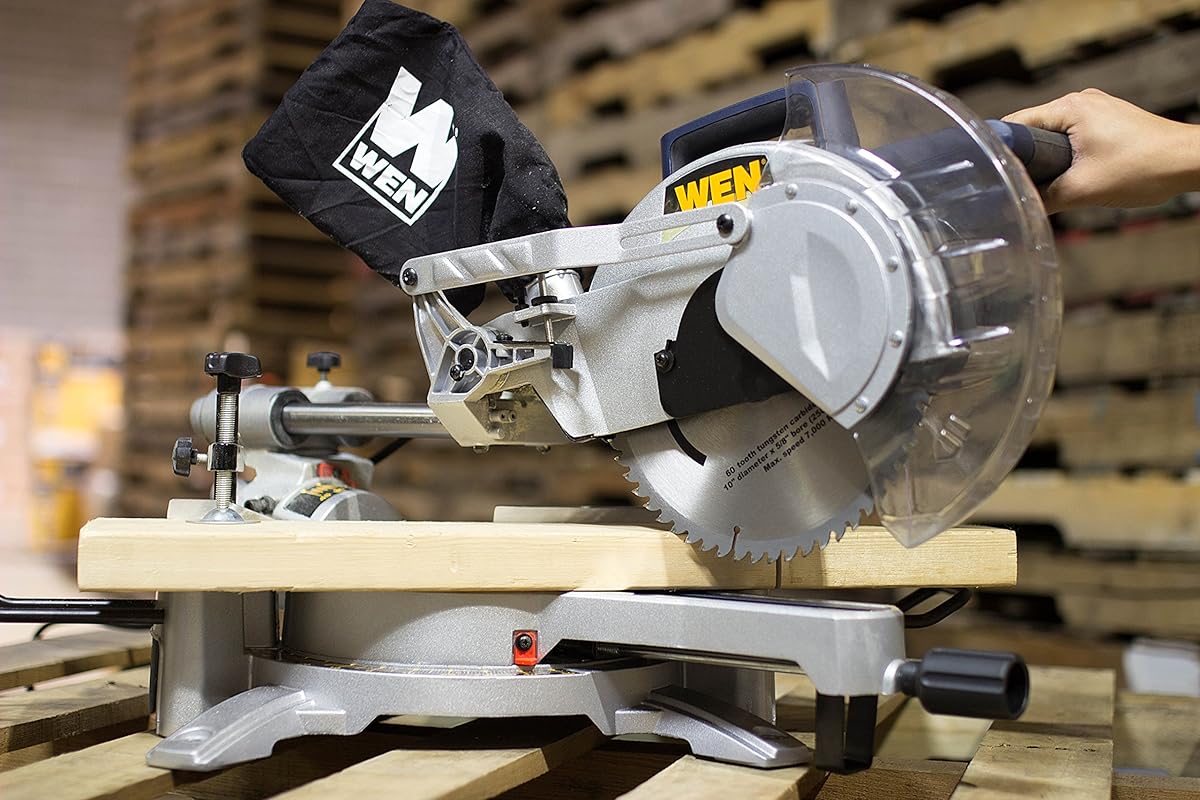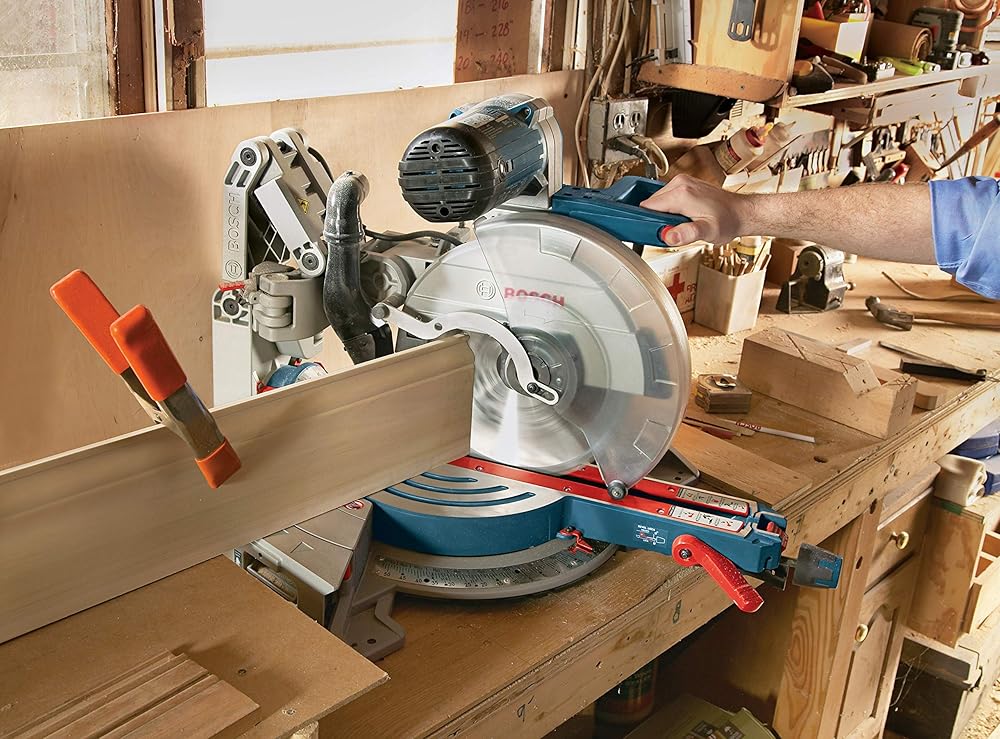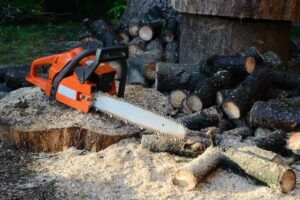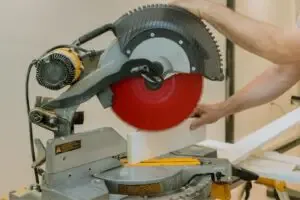
Quality power tools are an investment in your craft. People often ask, “I’m thinking Miter Saw vs Circular Saw; which is better?”
Before considering brands, prices, and models of saws, first ask yourself a question: “What kind of cutting do I do most in the shop or around home?”
If the answer involves a few different types of cutting jobs, maybe in different locations, then a Circular Saw is a versatile investment you will use regularly for fast and simple cuts.
Here are some differences between miter saw and circular saw, plus all the information you need to make the decision on which saw is right for you.
Miter Saw

The miter saw is a fairly recent invention. It’s a natural technological step up from the classic miter box that woodworkers use with a hand saw to get consistent and even cuts across the grain.
Since the 1970s, various power tool companies have made Miter Saws. Basically it’s a spinning round saw blade mounted on an arm that the operator uses to bring the blade onto a miter box for the cut.
A miter saw is a great shop tool for those who do a lot of crosscuts on workpieces not wider than about 9″. The operator holds the wood firmly in place on the work surface and brings down the blade arm.
The miter saw can be set to cut at specific angles repeatedly and precisely, which is perfect for projects that require two matching but opposite angled cuts and for furniture with precise joints.
Some miter saws tilt the blade arm at different angles, allowing you to make smooth, precise bevel cuts. There are four basic types of Miter Saw:
- Compound – the arm rotates left or right to cut across the board on angles that you preset
- Dual Compound – the blade arm can be set to cut on left or right angles, or tilted to cut a bevel in the workpiece
- Sliding – the blade arm is on a rail that lets it move forward and back toward the operator, allowing dados and rabbet cuts
- Sliding Dual Compound – the most complex, and most expensive, type of Miter Saw, which can do all the various moves of the other three
The miter saw takes up a fair bit of workshop space, as it requires its own table or stand. It is semi-permanent in place on a stable surface at about waist height for working the machine.
A Miter Saw is best at precise cross-cuts on pieces of limited size, and to make picture frames and joinery that requires exact complementary angles.
There are some miter saws make quick and accurate bevel cuts (on an angle into the wood). Blade size on a Miter Saw generally is in the range of 9″- 12″
- Allows quick and precise cross-cuts, whether angled or beveled
- Can be set for repeated cuts of the exact same or opposite angle
- Easy to set up and operate with simple instructions
- Great for making frames or cutting molding with precise angled cuts
- Takes up shop space – needs a table or stand
- Costs a bit more upfront
- Limited amount of cuts possible on a Miter Saw
Circular Saw

The circular saw is a very familiar power tool, seen in practically every woodshop and toolbox. It is one of the most versatile tools for various cuts in a variety of materials.
A circular saw features a rapidly spinning blade that can cut across large sheets of plywood, do rip-cuts along the grain, make quick cross-cuts, and more with the right set up and some practice.
The most popular type of circular saw is sometimes called a “sidewinder,” where both the motor and the blade are side by side, the blade on the right, with a flat metal bottom plate.
The bottom plate rests on the workpiece as you cut. The rapidly spinning toothed blade protrudes down through a slot in the bottom plate, making the cut as the operator slides the saw across the wood.
The circular saw uses a round toothed blades with different types of teeth and differently spaced gullets (the spaces between the blade’s teeth) for different types of cuts and materials to be cut.
Circular saw blades usually range from about 7 to 12″ but they can cut much wider pieces of wood.
The operator pushes the saw across the surface of the workpiece, which must be stable and secured to saw horses so the cut can proceed safely.
- Versatile and portable – can travel to where you need to cut
- Powerful and quick – cuts cross-grain or rips along the grain
- Allows you to cut across a wide sheet of wood
- Relatively inexpensive, cheaper to find a good quality model than a basic Miter Saw
- Adapts to a variety of different saw blades to adjust cut quality or to cut various types of materials, including wood, masonry, and metal
- Not as precise and easily set to do repeated cuts as a Miter Saw
- A bit more challenging to use, especially for those new to power saws in general
- Not ideal for angles and curves
- Requires sawhorses to balance workpiece
Features Showdown

Various Cuts in Different Locations Around the Shop or Anywhere Else
A circular saw is great for a variety of cuts. This saw is portable to go to where the cut is needed.
A circular saw is truly a handheld power tool, with full versatility. Of course, all power saws need to be within reach of a power source, unless it’s a cordless battery powered model.
A Miter Saw is a bench tool only. It can sit on a miter saw stand or an open a space on a table or workbench, and it is not easily moved from one place to another.
Winner: Circular Saw. If much of your work is mobile, and requires you to go to where the cutting must be done to do a range of types of cuts, then a circular saw is the best choice for you.
Quick, Precise Angled Cuts, or Same Length Cut Repeatedly
A Miter Saw is designed to make accurate, simple miter cuts on an angle, just as its name promises.
The Miter Saw is quickly and accurately reset for different or complementary angles on a new workpiece, or it can cut each board to exactly the same length and angle as the one before.
Adjoining angle cuts, like baseboards around a room or on a picture frame, are especially challenging to get just right with just a circular saw alone, and so they are best done on a miter saw.
Winner: Miter Saw. If framing or joinery work and quick, precise setup for angle cuts is key to your work, the Miter Saw is for you.
Portability and Versatility (Stand Out Features)

Circular Saw wins clearly in these related features. As a handheld power tool it can reach as far as you can take it, around the home, shop, or out in the field where you need to do quick cuts.
- Works any place in the shop or home: down near the floor, up to and along walls, even on the ceiling (which will be dangerous and take extreme care and planning if necessary)
- Leaves the shop and travels with you. True, a miter saw can be set up outside the workshop and travels much easier than a table saw, it is definitely not a portable tool.
- Requires only a stable and secure surface to cut on. Use sawhorses to a few cinderblocks securely standing on end for cutting with a Circular Saw.
Conclusion
When the dust settles, the results of the heavy-duty power saw battle, miter saw vs circular saw, are clear. But the choice still depends on you. For the first investment in a power saw that provides maximum versatility and portability, a Circular Saw will give a great return on your investment.
Use a circular saw if:
- You need to do a lot of quick simple cuts
- You need to do rip cuts or divide large sheets of wood into sections
- You move around in your work a lot, and you need a power saw where you’re at
- You will be cutting different materials, like masonry, metal and plastic
With a Circular Saw firmly in hand, an extension cord safely run to your worksite, and the correct blade for the purpose, you are ready to cut just about any material.
Use a miter saw if:
- You have space in your workshop for a medium-size tool on a tabletop or stand
- You do a lot of repeated cuts across the grain on 2 x 4s and 2 x 6s especially
- You do a lot of framing work, either building picture frames or construction building frames
- You build furniture or install molding or baseboards in houses often
When you have space in your workshop and funds in the budget for a specialty tool, add a Miter Saw to your shop.


![9 Best Pole Saws of 2023 [Ultimate Guide] 9 Best Pole Saws of 2023 [Ultimate Guide]](https://handykeen.b-cdn.net/wp-content/uploads/2021/03/best-pole-saw-300x200.jpg)



